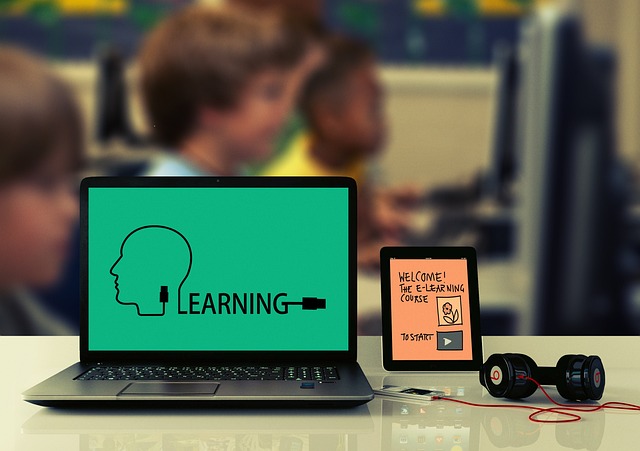RTO (Return to Study) students require tailored enrolment strategies addressing work, family, and financial challenges. RTO automation tools streamline processes, build trust, and highlight flexible support systems through personalized communication, data management, and multi-channel marketing. By offering customized learning experiences and leveraging analytics, these tools convert leads into enrolled students, increasing satisfaction and enrolment rates in today's digital landscape.
In today’s competitive educational landscape, converting Repeat Test-Takers (RTO) into enrolled students is a key strategy for institutions. This article explores effective RTO student enrolment strategies, focusing on the power of RTO automation tools to streamline processes. We delve into understanding RTO students’ unique needs and communicate effectively with them as leads. Additionally, personalized learning experiences are highlighted as a game-changer, along with methods to measure and optimize conversion rates, ensuring success in converting RTO leads.
- Understanding RTO Students and Their Needs
- The Role of RTO Automation Tools in Student Enrolment
- Effective Communication Strategies for Converting Leads
- Personalized Learning Experiences: A Key to Success
- Measuring and Optimizing Conversion Rates
Understanding RTO Students and Their Needs

Converting more RTO (Return to Study) students requires a deep understanding of their unique needs and preferences. These individuals often face various barriers when considering further education, such as work commitments, family responsibilities, or financial constraints. Therefore, developing targeted enrolment strategies that cater to these challenges is essential. RTO automation tools can play a significant role in streamlining the student journey, from initial enquiry to enrolment. By utilizing these technologies, educational institutions can automate tasks like lead capture, personalized communication, and application management, ensuring a seamless experience for prospective RTO students.
Effective conversion strategies should focus on building trust and demonstrating the value proposition of returning to education. This involves communicating the flexibility and support systems available, such as part-time study options, financial aid, and peer mentoring programmes. Engaging with RTO students through targeted marketing campaigns, workshops, or online webinars can help establish relevance and encourage them to take that first step towards enrolling in a course.
The Role of RTO Automation Tools in Student Enrolment

In today’s digital era, RTO (Recognition of Prior Learning) institutions can leverage automation tools to streamline their student enrolment processes, significantly enhancing their effectiveness and efficiency. These RTO automation tools play a pivotal role in converting leads into enrolled students by simplifying complex tasks and providing a seamless experience from initial inquiry to final acceptance. They enable institutions to manage vast amounts of data related to student applications, qualifications, and assessment results with ease, ensuring accuracy and timely responses.
By implementing robust RTO automation tools, institutions can proactively engage potential students, offering them personalized guidance and support throughout their learning journey. These tools facilitate the automated scoring and evaluation of prior learning assessments, allowing for quicker decision-making and enhanced student satisfaction. Moreover, they can integrate with marketing and communication platforms to nurture leads, share relevant course information, and promote special offers or discounts, ultimately increasing the chances of converting interested individuals into enrolled students.
Effective Communication Strategies for Converting Leads

Effective communication is a cornerstone in converting RTO (Retraining and Upskilling) leads into enrolled students. Utilizing RTO automation tools, such as email marketing platforms and CRM software, allows for personalized and timely interactions with potential students. These tools enable institutions to automate lead nurturing processes, ensuring that each prospect receives relevant and targeted information tailored to their specific needs and interests.
Implementing multi-channel communication strategies is key. This includes leveraging email campaigns, social media engagement, and even phone calls to reach out to leads. Each channel offers a unique opportunity to build relationships and convey the value proposition of RTO programs. By combining compelling content with strategic messaging, institutions can effectively communicate the benefits of their offerings, ultimately encouraging prospective students to take the next step towards enrolment.
Personalized Learning Experiences: A Key to Success

Personalized learning experiences are a game-changer when it comes to converting RTO (Recruitment and Training Organization) leads. In today’s digital era, RTO automation tools can help create tailored content and pathways for each student, addressing their unique needs and interests. By leveraging data and insights gathered from student interactions, organizations can design targeted marketing campaigns and enrolment strategies that resonate with potential learners. This level of personalization not only enhances the student experience but also increases the likelihood of conversion by demonstrating a genuine interest in their journey towards skill acquisition.
For instance, using RTO automation tools to deliver personalized emails or messages based on browsing behavior or course preferences can make students feel valued and understood. Additionally, offering customized learning modules or resources that align with individual career goals can showcase the organization’s commitment to helping each student succeed. As a result, personalized learning experiences foster a stronger connection between the RTO and prospective students, ultimately driving higher enrolment rates and improved student satisfaction.
Measuring and Optimizing Conversion Rates

Measuring and optimizing conversion rates are vital components in refining your RTO student enrolment strategies. Utilizing RTO automation tools can significantly aid in this process by providing detailed analytics on lead behaviour and engagement. By tracking key metrics such as click-through rates, form completion rates, and time spent on landing pages, these tools offer insights into the effectiveness of your marketing campaigns and conversion paths.
Through data-driven decisions, you can identify bottlenecks in your RTO student enrolment strategies and optimize them to convert more leads. For instance, if a particular landing page has low engagement, analyzing its design, content, and calls-to-action can help make necessary adjustments to improve the overall user experience. This iterative process of measuring, optimizing, and refining ensures that your RTO enrolment strategies remain effective in attracting and converting potential students into actual enrolments.
Converting RTO (Return to Education) students involves a multi-faceted approach. By understanding the unique needs of this demographic and leveraging RTO automation tools for efficient communication, institutions can significantly enhance their enrolment rates. Personalized learning experiences tailored to individual student goals prove pivotal in fostering engagement and motivation. Implementing data-driven strategies to measure and optimize conversion rates ensures continuous improvement in RTO student recruitment. With the right combination of technology, personalized support, and targeted messaging, educational institutions can effectively convert leads into enrolled students.
